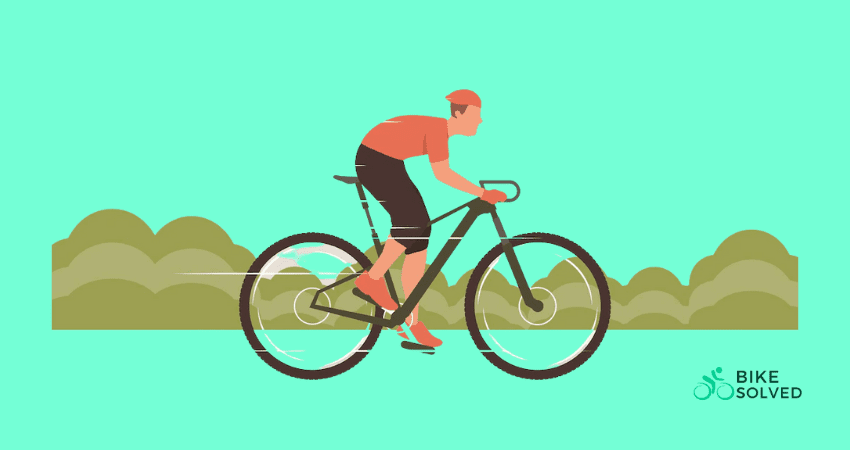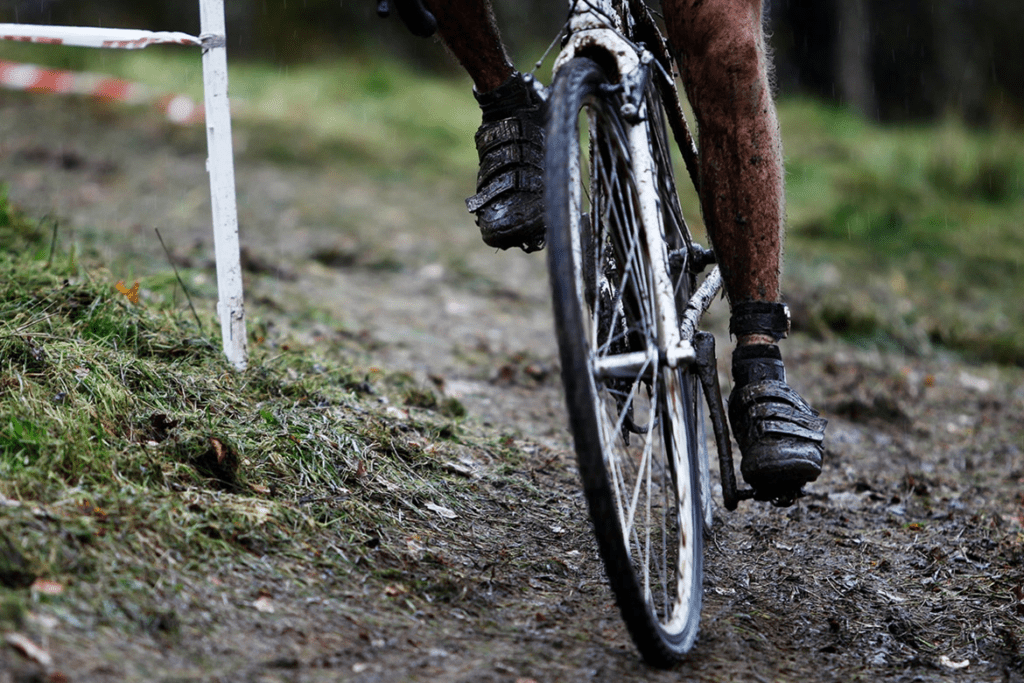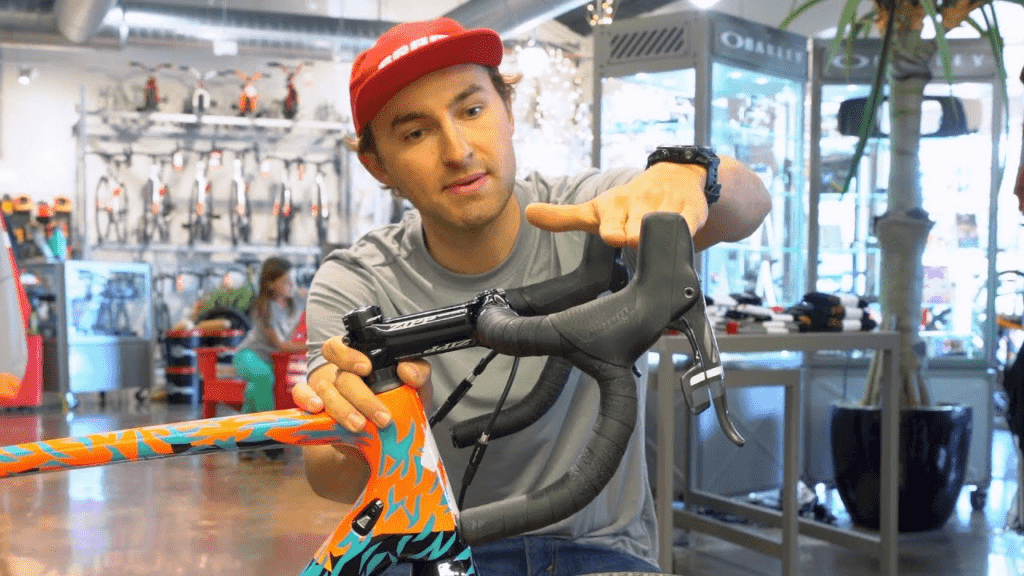Choosing the right bike to buy is a tough decision that needs to be taken based on various factors. You cannot make the right choice by simply picking a bike with an attractive look or specifications. It is crucial to take your primary utility into consideration. Coming across cyclocross and road bikes while searching the web is quite possible.
Whether you are a novice rider or an experienced one, you might wonder how riding a cyclocross bike differs from riding a road bike. You might also be compelled to think if these distinctions prompt one bike to outweigh the other.
These bikes not only differ in terms of physical attributes, but they have also been designed to suit different terrains. In this article, I have distinguished both types of these bikes on the basis of various features.
Being an avid cyclist myself, I have sufficient knowledge about the working of these two bikes. Based on this knowledge, I have curated the perks and downsides of choosing both cyclocross bikes and road bikes. These will eventually give you a clear idea of what to expect while picking either one of them. Let’s first understand how cyclocross bikes work.
Bikesolved.com is readers supported, you may find Amazon affiliated links on this page, that pays us commission for recommending products at no extra cost to you.
What are Cyclocross Bikes?
Cyclocross bikes are lightweight bikes with a rigid frame meant for rough terrains and cyclocross events where you may require to lift your bike if you stumble upon road barriers in your way. You are able to do so because of the rear brake cable cyclocross bikes have. They are also called ‘cross’ or ‘CX bikes.’
The structure and geometry of these bikes are designed to facilitate off-road as well as on-road riding. This bike can take you anywhere, whether it is mud, dirt, rocks, or snow. From grass fields to concrete-based terrains, it can stand anything. Unlike road bikes, they offer versatility as they do not limit you to smooth paved surfaces.
Key features:
- Tough and durable frame
- The frame is composed of light aluminum, steel, or carbon.
- Equipped with drop handlebars
- Encourages an upright seating posture
- Equipped with cantilever and disc brakes
- Wide, treaded, and durable tires
What is the purpose of a cyclocross bike?
Cyclocross bikes are a cross between mountain bikes and road bikes. As discussed before, these bikes are versatile and are ideally suited for both on and off-trails. However, their intended purpose is a cyclocross race.
Their frame and structure have been designed to indulge in hour-long cyclocross racing that involves road obstacles and barriers in the way. The bikers are expected to carry their bikes over these barriers and move through mixed terrains. Their tracks may involve smooth paved surfaces and those full of mud and dirt.
Cyclocross Bikes Vs Road Bikes – The Difference
Geometry and posture
The relaxed geometry of cyclocross bikes compliments their ability to maximize comfort and agility. You get to have a relaxed and upright posture for a better riding experience. Due to the bottom bracket being higher than the ground and the angle of the head tube being smaller, your seating position is quite comfortable.
A longer wheelbase and the pedals not touching the surface on rough terrains only add to the comfort. You will enjoy a firm grip when you lift your bike on your shoulders due to obstacles. The structure of a cyclocross bike ensures that the pedals do not touch the front wheels, even on tight and prompt turns.
Since a standard road bike provides you with an extended reach, your body weight is evenly distributed over the key touchpoints of the bike. This is where your forward-leaning posture comes from. Sitting in this arching position for long hours can cause back pain.
It also forces your body to stretch out, but it will eventually improve the speed of your bike, even if it compromises comfort. Due to the head tube and bottom bracket stooping lower, your bike’s saddle is also low. Such a structure and geometry allow you to make prompt turns, making your bike respond faster to you.
Frame
The type of frame influences the bike’s weight and, therefore, its speed too. Professional cyclocross bikes use an aluminum or carbon frame. On the other hand, the composition of the structure in a standard cyclocross bike is steel and titanium. Road bicycles are mostly equipped with carbon fiber frames, making them very lightweight.
It is evident that the materials used for the composition of the frame of a cyclocross bike make it relatively heavier. However, it is still light enough for you to pick up on your shoulders when you encounter obstacles.
Tires
Just like mountain bikes, the tires of a cyclocross bike tend to be broad, treaded, and rigid. They can be as wide as 30-40 millimeters as wider tires ensure a firm grip over the surface. Since cyclocross bikes are expected to ride over rugged terrains and indulge in a cyclocross race, better traction is required. This can be fulfilled when a large portion of your tires is in direct contact with the surface.
Even the clearances at the front fork are wide to prevent blockage due to snow or mud. On the contrary, road bikes possess narrow, slim tires with light rims. From size to texture, there are key differences in the wheels and tires of both types of bikes.
The tire width of road bikes ranges from 20-28 millimeters. Since these slick tires do not retain a grip over the ground, they improve the speed of your bike. However, these slick tires are also the reason behind road bikes being unsuitable for rough terrains.
Brakes
It is crucial to consider the type and efficiency of the brakes your bike is equipped with. Modern road bikes are mostly fitted with either disc brakes or rim brakes. Disc brakes could either be mechanical or hydraulic. Either way, they perform much better than rim brakes, especially in wet or muddy conditions.
On the other hand, Cyclocross bikes are equipped with two sets of brakes, cantilever brakes, and disc brakes. Cantilever brakes are used because of the wide cyclocross tires. However, most bikers prefer disc brakes because of their commendable performance.
They provide a great stopping power which is noticeable in wet weather. The rear brake lever in a cyclocross bike is positioned towards the left side of the handlebar so that the biker can lift the bike with one hand while applying the brakes with another.
Handlebars
Even though both road bikes and cyclocross bikes use drop handlebars instead of flat bars, their width varies, and so does the reason behind using drop bars. Road bikes are designed to be fitted with narrow handlebars, which steep a little low.
This positioning of drop bars improves speed and facilitates an aerodynamic posture, allowing you to go downhill with no discomfort. This is why road bikes are great for road racing.
But, riding in this forward-leaning position that arches your back for long hours can create back problems for you. Cyclocross bikes use wider drop bars because handling the bike is more manageable with them on rugged terrains. Unlike road bikes, they are positioned slightly higher.
This reduces the chance of back pain by allowing the riders to slightly straighten their back for a better riding experience. However, it still does not prevent the aerodynamic posture as you are required to bend forward for efficiency. Furthermore, the Union Cycliste Internationale (UCI) has made it obligatory for all cyclocross bikes to have a width of the bike below 50cm.
Gears
The focus and intent of a cyclocross bike differ from that of a road bike. This is why a road bike is fitted with relatively higher gears, as it focuses on maximizing speed and performance. High gears help to achieve that by allowing a road bike to ride at high speeds.
On the other hand, a cyclocross bike cannot solely focus on agility. It is expected to accommodate both smooth and rugged terrains. For this purpose, cyclocross bikes are equipped with lower gears.
Weight
Cyclocross bikes are considerably heavier than road bikes because of the thick tires they are equipped with. A rigid frame and disc brakes just add up to this weight. However, these cyclocross bikes are still light enough for you to lift them up in case you come across road barriers while riding.
Road bikes are relatively lighter due to a compact frame, thin tires, and a single brake system. As discussed earlier, most road bikes possess a carbon fiber frame. This significantly lowers their weight.
Comfort
Road bikes are generally focused on maximizing speed and agility. They tend to overlook the importance of comfort in the process. With drop bars that are positioned low and the overall geometry of the bike, you are compelled to lean forward while riding in an aerodynamic position.
The structure of road bikes prevents you from having an upright position. This highly impacts the comfort of a road bike. Moreover, the narrow saddle of a road bike could add to your discomfort, causing muscle soreness.
Unless you are somebody who prefers a lean saddle, you might find it uncomfortable. However, you can always get a padded saddle cover or replace the original saddle with a new one. Cyclocross bikes tend to prioritize comfort and miss out on speed. Even though they use drop bars, their positioning makes all the difference.
The higher position of the drop bars, saddle, and overall geometry make a cyclocross bike much more comfortable. While riding, your back does not arch, and you get to enjoy an upright posture.
Pros of Cyclocross Bikes
- They offer versatility as you can ride them both on and off-trails.
- Excellent for rugged terrains full of mud, dirt, or concrete.
- Their rigid and tugged tires ensure a firm grip on the ground
- Comfortable to ride
- An upright riding position prevents back problems
- You can lift them up if you stumble upon barriers.
Cons of Cyclocross Bikes
- Heavier than road bikes
- They compromise on speed, just like a mountain bike.
Pros of Road Bikes
- Their compact and super light frame is easy to control
- Offers speed and agility on paved roads.
- You can take these bikes for a long rides.
- Easy to incorporate into your daily exercise routine
- Narrower tires give you more speed and power
Cons of Road Bikes
- They compromise on comfort.
- Leaning forward for a long might cause back pain.
- They are not versatile and are only fit for on-road riding.
What is better, a road bike or a cyclocross?
After reading this article, you would agree that the answer to this question varies according to the goals and requirements of the biker. Your ideal bike totally depends upon your experience, prime utility, and the terrains you will be required to cover up.
If you are only supposed to commute over paved paths in less time, you should vouch for a road bike. However, if your trails include concrete, mud, snow, or dirt, the slick tires of a road bike will not be able to work for you. A cyclocross bike will work great even if you need to switch between city roads and concrete-based surfaces.
Its thick treaded tires and sturdy frame might make it slightly heavier than a road bike, but it will retain a strong grip over the ground. Not to forget, a cyclocross bike overweighs a road bike when it comes to comfort with a more relaxed geometry. It may not be as quick and light, but its upright seating position makes it much more comfortable than a road bike.
Your decision should also be guided by the intricate features of these bikes. If you are somebody who cannot crouch forward for long, you should not settle for a road bike. Due to the position of its drop bars and overall geometry, you will have to bend closer to the handlebars while riding. Doing this for a long might strain your neck and back.
Since I commute off-road on bumpy terrains and prefer an upright posture while riding, a cyclocross bike works best for me. A commendable component that I really find convenient is the rear brake cable cyclocross bikes are equipped with. It allows you to lift your bike whenever you stumble upon obstacles on the road.
FAQs
Is a cyclocross bike good for road riding?
Cyclocross bikes can be used for both on and off-riding as they are pretty versatile. You can ride them off-road on bumpy terrains and city roads. However, if you are specifically looking for a bike to ride on paved roads, a road bike will be the best choice to make. This is because a road bike will help you cover longer distances in less time and with more speed.
Is a cyclocross bike as fast as a road bike?
A cyclocross bike is not as fast as a road bike as its frame is slightly heavier. Its weight directly affects its speed. Unlike road bikes, they are not fitted with narrow tires. Their tires are wide, treaded, and durable, as they are meant for off-road riding and rugged terrains. This might increase the level of your comfort, but it prevents a cyclocross bike from being as fast as a road bike.
Can I put road tires on a cyclocross bike?
If your tracks are limited to paved surfaces or smooth city roads and your requirements demand, you can definitely put road tires on your cyclocross bike. However, these slimline tires would not work as well on rough and bumpy terrains. Therefore, you should only consider riding a cyclocross bike with road tires if your purpose and terrain support it.
Are cyclocross bikes good for commuting?
Cyclocross bikes are perfectly suited for commuting, considering how versatile they are. They not only allow you to cover concrete-based surfaces but also smooth city roads. The position of their handlebars and overall structure encourages an upright posture. Their geometry makes them pretty comfortable for commuting.
Are cyclocross bikes good for touring?
Yes. Whether touring, commuting, cyclocross racing, or on-road riding, cyclocross bikes can be used for all purposes as their specifications and geometry make them versatile. You would not have to think twice before taking them to rough terrains, nor will you be worried about them while touring. In fact, they are lighter than a touring bike itself.
Are cyclocross bikes durable?
Due to thick, treaded tires and a sturdy bike frame, cyclocross bikes are quite durable. These bikes are designed to cover mixed terrains. This implies that they can also take you through rough, bumpy, and rugged surfaces. Their wider tires are meant to ensure a strong grip over the trail in these conditions. Therefore, cyclocross bikes, being equipped with sturdy components, excel in durability.






